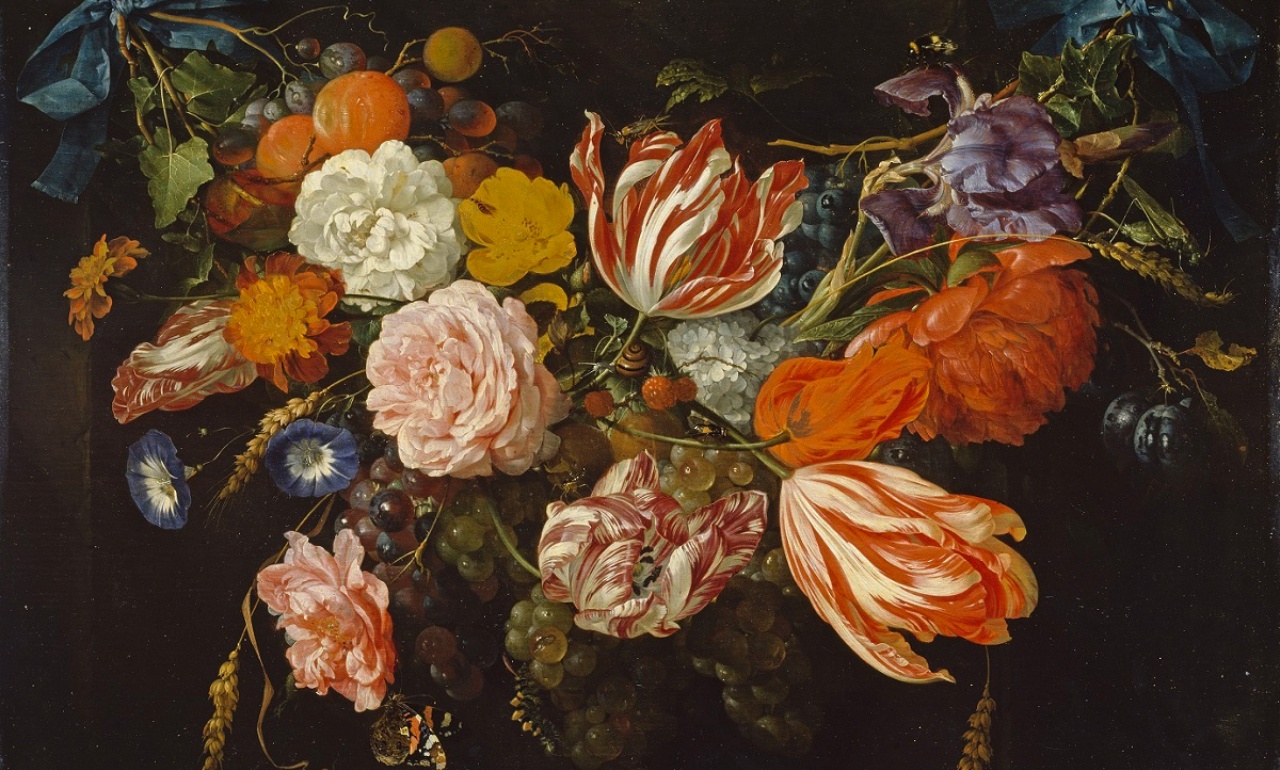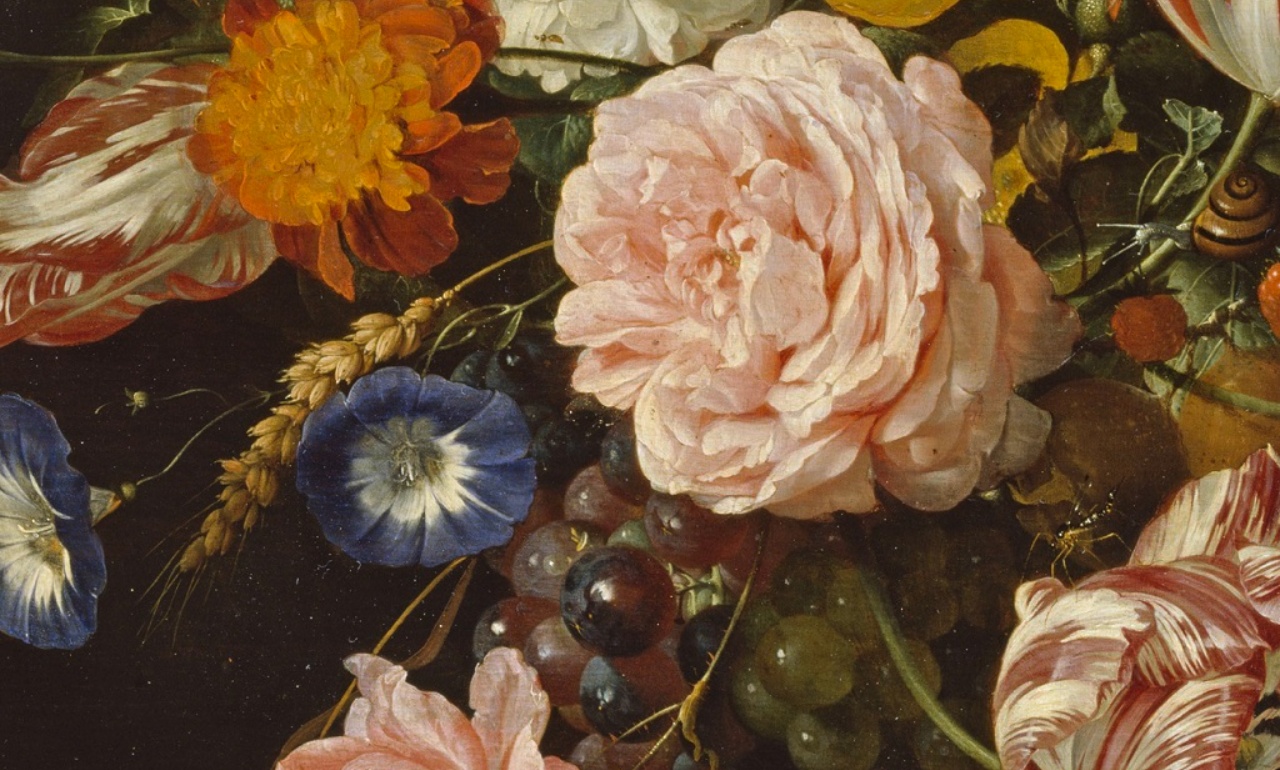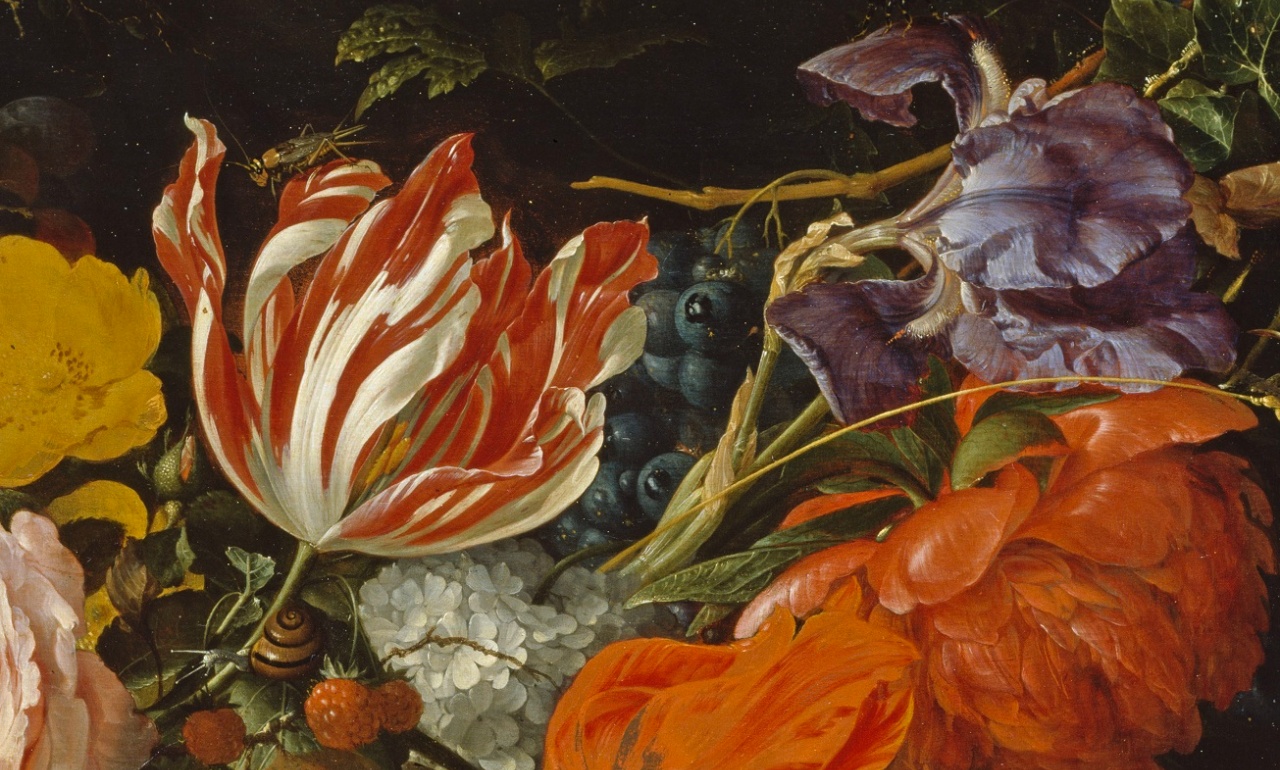Cookies make our services easier. With the use of these services you are accepting that we use cookies.
Jan Davidsz. de Heem
Garand of Flowers and Fruit
No other artist influenced Dutch still life painting in the 17th century as much as Jan Davidszoon de Heem (1606-1684). Garland of Flowers and Fruit is counted among the most important works of his time. De Heem succeeded in capturing and reproducing objects in all their beauty. The flowers and fruit seem so real that you can literally smell the roses, would like to nibble on the grapes and hear the insects chirping and humming.
Garlands which fill the complete image are very rare among still life paintings. The festoon foreground is arranged with bright white-red and pink flowers, and especially tulips, indicating a play on the tulip mania which ended abruptly in 1637.
The background is composed of dark ivy leaves, grapes, plums and grasses. It is obvious that the various flowers here bloom at different seasons and that the fruits mature at different times of the year. Thus it may be assumed that this arrangement could never have existed in reality.
The Dutchman painted the garland in its most sumptuous state – with everything in full bloom. On closer examination, the multitude of insects in the composition stand out. The artist de Heem is returning to the concept of vanity here which was often applied in the Golden Age: All that is earthly and beautiful is transient. While a garland of flowers only looks fresh for such a short time, De Heem’s work had now shone forth in all its glory from more than 350 years.
At the beginning of his career, Jan Davidsz de Heem lived in Antwerp, however he worked in Utrecht among other places during the 1660s. His most well-known pupils were Abraham Mignon and his son Cornelius.



